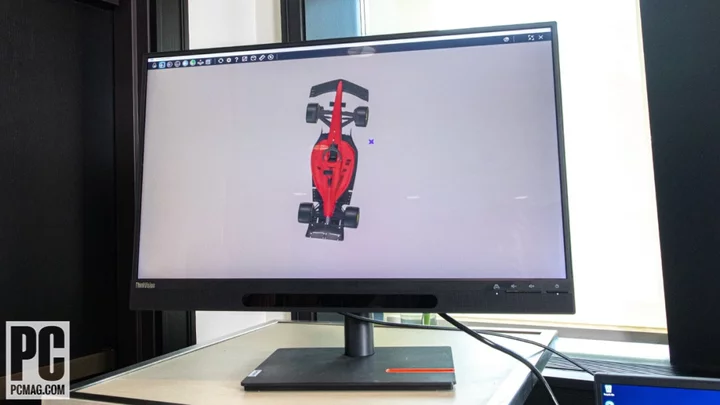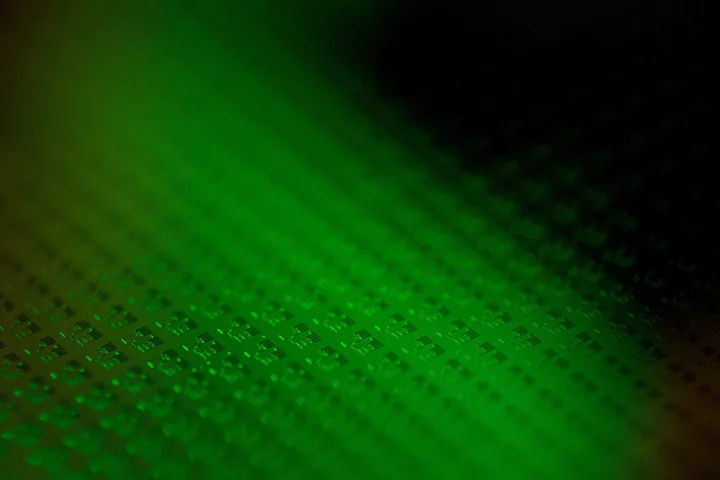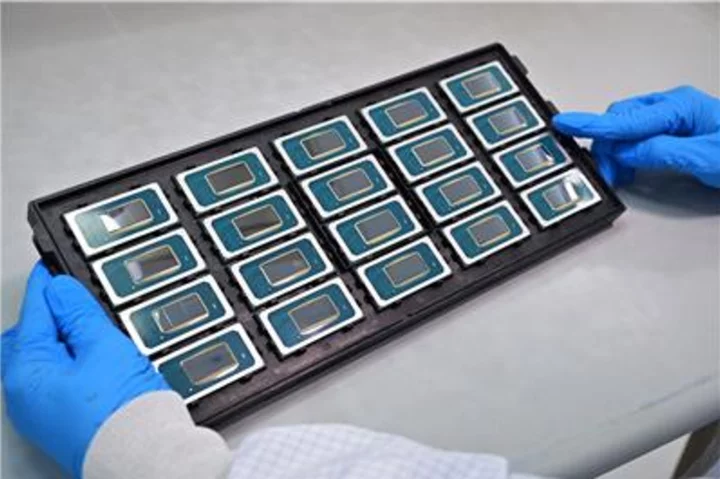Every year we get our hands on dozens of different monitors geared toward productivity and content creation, but, alas, they're all two-dimensional. We don’t often see monitors specifically for creating 3D content, like the Lenovo ThinkVision 27 3D announced Friday at the IFA trade show in Berlin. This 27-inch display offers glasses-free 3D, which Lenovo says allows for more immersive capabilities to suit the needs of 3D graphic designers, editors, and developers.
Meeting with Lenovo in New York City ahead of IFA, we got to go hands on—and eyes on—with this special new 3D monitor. Here's what we saw.
What Is Glasses-Free 3D, Anyway?
In terms of its basic specs, Lenovo’s new monitor is strikingly similar to other non-3D monitors. A 4K IPS panel, it offers a peak resolution of 3,840 by 2,160 pixels in 2D, and 1,920 by 2,160 pixels when displaying in 3D. It has a 1,000:1 contrast ratio and is rated at 310 nits of maximum brightness. Ideal for serving as a hub for all your PC peripherals, the monitor comes with five USB 3.2 ports (one of which is a Type-C port), two HDMI 2.1 ports, and an Ethernet jack. It's something of a dock, in addition to being a display centerpiece for your creative workspace.
(Credit: Molly Flores)But the monitor’s unique calling card is definitely its glasses-free 3D tech. Taking advantage of switchable lenticular lenses and real-time eye-tracking for fluid motion, the ThinkVision 27 offers more natural 3D viewing experiences than previous 3D panels that required glasses, Lenovo says. During a brief demo, we were impressed by the 3D effect, though like many glasses-free 3D experiences, there’s a limited sweet spot for ideal viewing, with limited viewability beyond that. In the ThinkVision’s case, the 3D field of vision extends about 16 inches from side to side, while the viewing distance ranges between 24 and 39 inches.
This 3D monitor projects two independent images to your eyes, so that each eye sees the subject from a slightly different angle. (That's why, in 3D mode, the peak resolution is reduced; in essence, the panel has to draw the image twice.) In doing so, Lenovo says, the monitor can deliver crisp stereo vision and depth perception in a natural and efficient stereoscopic visualization. In short, the image pops right off the screen.
(Credit: Molly Flores)Glasses-free 3D is not new, mind you. The Nintendo 3DS is probably the first mainstream 3D device that springs to mind, but the tech is becoming increasingly more common, especially in the laptop space. Earlier this year at CES 2023, we laid eyes on the Asus ProArt Studiobook 16 3D OLED, a content creation laptop that featured similar lenticular tech. Acer also stuffed a similar screen into one of its Predator Helios gaming laptops. But the ThinkVision does offer a larger screen and full 4K-resolution output for times when you're not 3D-ing it, and you won’t have to worry about any of the pitfalls that come from working on a laptop.
The image can also be manipulated using Lenovo's 3D Explorer software, which not only lets you access all your 3D apps, but also arms creators with useful tools like a 3D player for viewing videos and files with 3D effects, and an SDK for developers to build 3D applications. The catch is that you’ll need to have a computer with the minimum requirements for handling 3D. These include an Intel Core i5 or AMD equivalent CPU, an Nvidia GeForce GTX 1050 GPU or AMD equivalent, and at least 16GB of DDR5 RAM, according to Lenovo.
A 3D Monitor That Just Works
Our demo was short and simple, with a model of a red race car suspended in 3D to show an example of how creators would use the screen. The 3D worked well, but the image blurred slightly when viewed from the sides. Still, keeping in the focus zone was perfectly manageable if we were stationary, and while the monitor is definitely catering to a niche, it would no doubt be useful to those who spend lots of time building 3D objects in software.
In our demos, we had to stand in a precise spot to see the proper 3D effect, but when we did, the car just popped out of the screen. (Of course, you'll likely be seated at a desk and will have adjusted the panel to just the right spot and angle to use it day-to-day.) It's impossible to depict the 3D effect in our images here, or on video (we tried!), but it felt like you could reach out and grab or manipulate the car. The one thing we did note, though, is that the viewing sweet spot is narrow enough that two people standing side by side would have to put their heads (literally) together to have the same 3D viewing experience at the same time. So, for collaborative work in front of the display, the tech needs work; really, for now it's a solo experience.
If you work with 3D programs, though, the Lenovo ThinkVision 27 3D Monitor might be a worthy addition to your studio setup. Eager to see it for yourself? The monitor will arrive in January and will retail for $2,999. Be sure to check back then for our full review.









